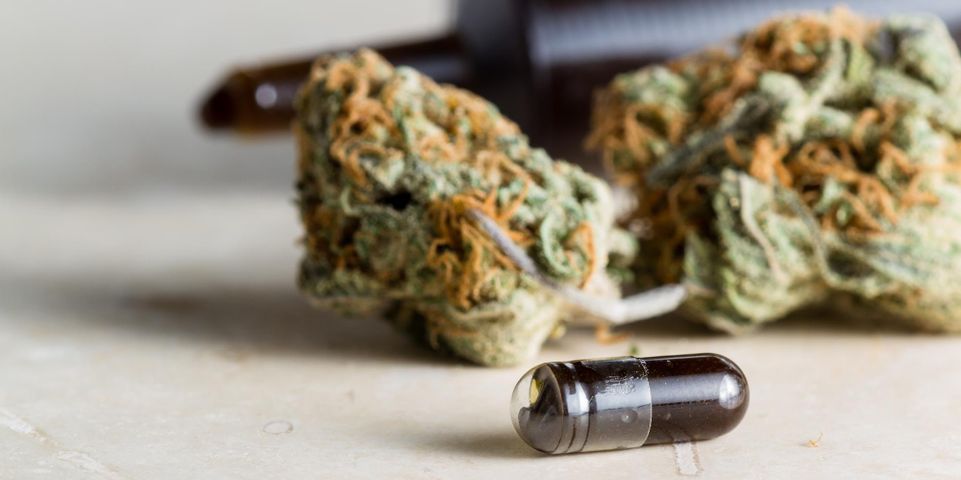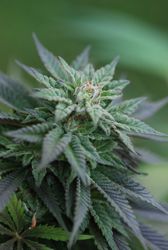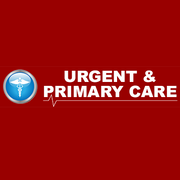
Over the last 20 years, 30 states—including Urgent & Primary Care’s home state of New York—have passed initiatives legalizing the use of medical marijuana. Despite the treatment’s budding popularity, there is still widespread confusion about its use and efficacy. Albany’s leading primary care doctors are here to explore the issue.
A Brief Introduction to Medical Marijuana
What Is It?
 When people speak about medical marijuana, they are referring to the use of the whole, unprocessed plant or its basic extracts to alleviate the symptoms of various conditions or illnesses. These healing properties come from the hundreds of chemicals inside the plant known as cannabinoids. The most prevalent cannabinoids are tetrahydrocannabinol (THC) and cannabidiol (CBD).
When people speak about medical marijuana, they are referring to the use of the whole, unprocessed plant or its basic extracts to alleviate the symptoms of various conditions or illnesses. These healing properties come from the hundreds of chemicals inside the plant known as cannabinoids. The most prevalent cannabinoids are tetrahydrocannabinol (THC) and cannabidiol (CBD).
THC is a psychoactive compound that produces the “high” most people associate with marijuana. CBD, on the other hand, is not psychoactive. Rather, it interacts with the body’s endocannabinoid system, jump-starting physiological reactions. This network of neurons runs throughout the body, which explains why medical marijuana has diverse therapeutic effects.
What Conditions Does It Treat?
Medical marijuana is used to treat a wide range of conditions and illnesses. Examples include:
- Alzheimer’s Disease
- Anorexia & Other Eating Disorders
- Chronic Pain
- Crohn’s Disease
- Glaucoma
- Post-traumatic Stress Disorder
- Schizophrenia
- Multiple Sclerosis
- Wasting Syndrome
It can also be used to alleviate any adverse side effects caused by other medications or therapies. Chemotherapy, for example, often causes nausea, vomiting, and loss of appetite. Medical marijuana alleviates these symptoms, allowing the patient to have a higher quality of life during their cancer treatment.
Is It Effective?
The United States Food and Drug Administration (USFDA) does not yet approve or recognize marijuana as a viable form of treatment. However, a wealth of research suggests the treatment is effective. ProCon.org, for example, performed a metanalysis of 60 peer-reviewed studies published between 1990 and 2014. These experiments covered a variety of illnesses including bipolar disorder, rheumatoid arthritis, and Parkinson’s disease. ProCon’s analysis found that patients responded positively in 41, or 68.3%, of the studies. Most FDA-approved pharmaceuticals, on the other hand, only require two pivotal trials.
How Do You Get a Prescription?
 Each state has specific regulations regarding medical marijuana. In New York, for example, you can only receive a prescription if you have been diagnosed with a debilitating or life-threatening illness such as cancer, HIV infection or AIDS, or epilepsy. Other conditions may be approved after consideration by the NY Commissioner of Health. Furthermore, you can only have the drug in oil, liquid, or capsule form. Smoking marijuana is prohibited.
Each state has specific regulations regarding medical marijuana. In New York, for example, you can only receive a prescription if you have been diagnosed with a debilitating or life-threatening illness such as cancer, HIV infection or AIDS, or epilepsy. Other conditions may be approved after consideration by the NY Commissioner of Health. Furthermore, you can only have the drug in oil, liquid, or capsule form. Smoking marijuana is prohibited.
To get a prescription, you’ll need to consult a primary care doctor such as Dr. Dipti Bhoiwala of Urgent & Primary Care. Dr. Bhoiwala is licensed by the state of New York and can provide the formal diagnosis, documentation, and written certification you need to apply for your medical marijuana card.
To schedule a medical marijuana consultation, call Urgent & Primary Care at (518) 463-8262 today. For more on Dr. Bhoiwala and the other experienced primary care doctors at his practice, visit them online.
About the Business
Have a question? Ask the experts!
Send your question

